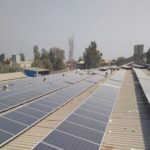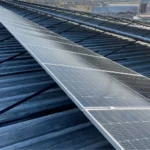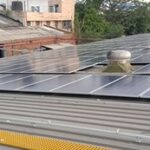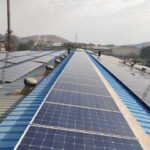What Is a Solar Power Generating System? | Complete Guide
What Is a Solar Power Generating System? | Complete Guide
Solar photovoltaic (PV)cells / modules generate electricity from sunlight, which can be fed into the mains electricity supply of a home/industry/building or sold to the public distribution company connected to the grid. This will Reduce the need for generation through fossil fuel technology. More and more solar energy systems on roof top will help create jobs, enabling home/industry/building to save money, and cut greenhouse emissions/ pollution.
PV modules use semiconductor materials (usually silicon) to generate DC electricity from sunlight. A large area is needed to collect as much sunlight as possible, so the semiconductor is either made into thin, flat, crystalline cells, or deposited as a very thin continuous layer onto a support material, usually glass. The cells are wired together and sealed into a weather proof module, with electrical connectors added. Modern modules for grid connection usually have between 48 and 72 cells and produce dc voltages of typically 25 to 40 volts, with a rated output of between 150 and 300 Wp solar panels . Then these panels are combined to give a certain voltage and current to be fed to an inverter which will then convert DC to AC electricity to be further used for energy/power needs of a home/industry/commercial building.
Grid-tied PV systems for producing/generating electricity are installed on the rooftop or ground in or around a building. This can also be taken up at a land that could’nt be used for other purposes like agriculture. Ideally the PV faces towards the equator and the exact direction is critical otherwise there is loss of production of solar energy. However, it is important to make sure that there is minimal shading of the PV. If the PV electricity production exceeds building demand then the excess can be exported to the grid, and vice versa. With net metering being permitted by govt in almost all states , clients are billed on net of export and import of electricity.
A typical grid connected system rated at 1 kWp requires an area of about 10 m2. However if the roof is slanted tin shed ( mostly industries have slanted roof of tin shed)and south facing then the area required reduces to 7 sq mts.
Suggested Articles

Why Go Solar: A Complete Guide to Solar Power for Homes and Industries
Switching to solar energy offers significant savings and environmental benefits. This guide explains why going solar is a smart choice, covering financial incentives, reduced electricity bills, and positive impacts on the planet.

UPNEDA Solar Subsidy 2025: How to Maximize Savings on Rooftop Solar
Discover how the UPNEDA Solar Subsidy 2025 can help you cut electricity costs and make rooftop solar more affordable. Learn about eligibility, subsidy rates, and the step-by-step application process.

Solar Projects Challenges in India: Module Supply Shortages and Policy Delays Slow Growth
India’s utility-scale solar projects face delays due to module supply shortages and policy challenges, impacting the growth of renewable energy.

Solar Chankya: Complete Guide to Solar Systems and Components
Discover the key components of solar systems—from panels to inverters and batteries—and how they work together for efficient energy solutions

End of Rooftop Solar Subsidy for Industrial & Commercial Consumers: What You Need to Know
The rooftop solar subsidy for industrial and commercial consumers is coming to an end. This guide explains the implications for businesses, updated policies, and strategies to adopt solar power without relying on subsidies.

100 kW Solar Power Plant in Indore – Latest Cost, Subsidy & Payback Period
A 100 kW solar plant in Indore costs around ₹40–55 lakh in, offering annual savings of up to ₹10 lakh and a payback period of 4–6 years. Learn about installation, maintenance, and ROI to make your solar investment worthwhile.

Agrivoltaics: Merging Solar Power with Farming
Discover how solar batteries store excess energy, maximize your solar system’s efficiency, and provide reliable power during outages. Learn about the types, benefits, lifespan, and maintenance tips to make the most of your solar investment.

Financing made easy for the Rooftop Solar Projects
Switching to solar is easier than ever with flexible financing options. This guide explains how to fund your rooftop solar project through loans, subsidies, and government schemes to make clean energy more affordable and sustainable.